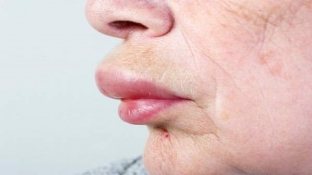The main difficulty of angioedema is that it is diagnosed late. In many patients, hereditary angioedema for many years can be manifested only by the presence of abdominal pain, which greatly complicates the diagnosis. At the same time, about a third of patients undergo surgical treatment for suspected acute chronic pathology. In patients with hereditary angioedema, the phenomenon of the geographical abdomen as a result of numerous operations has been described. How to diagnose hereditary angioedema in time?
Characteristic specific signs of hereditary angioedema
Patients who experience persistent abdominal pain, in whom gastrointestinal diseases are not confirmed by laboratory – functional methods of research, require additional research to exclude diseases of the complement system. Taking a family history is of great importance in making a diagnosis.
The importance of examining close relatives is great, since people with an undiagnosed hereditary angioedema in 35% of cases are at risk of death.
The atypical course of hereditary angioedema is not accompanied by skin edema, abdominal pain and arthralgia may occur. It is possible to develop epileptic seizures, Raynaud's syndrome and skin purpura. Quite rare manifestations of hereditary angioedema are the presence of pleural effusion, circulatory disorders with hemiparesis, dysuria, urinary retention, swelling of muscles and joints.
 The presence of edema on the face may be accompanied by its spread to the meninges, which is manifested by meningeal symptoms, notes estet-portal.com. Symptoms of hereditary angioedema can occur both individually and all together, their severity is variable. There are major and minor criteria for hereditary angioedema.
The presence of edema on the face may be accompanied by its spread to the meninges, which is manifested by meningeal symptoms, notes estet-portal.com. Symptoms of hereditary angioedema can occur both individually and all together, their severity is variable. There are major and minor criteria for hereditary angioedema.
Great criteria for hereditary angioedema:
- spontaneously resolving abdominal pain of unknown etiology, often recurring, lasting more than 5 hours and may be accompanied by vivid symptoms;
- Non-inflammatory angioedema without urticaria, which is slowly increasing and lasts more than 12 hours, resolves on its own.
Minor criteria for hereditary angioedema:
- onset of manifestations of the disease at the age of 20 years;
- family history of recurrent angioedema, abdominal pain, and/or laryngeal edema.

Basic criteria for the diagnosis of hereditary angioedema
Diagnosis of hereditary angioedema is carried out according to several criteria. This is a lesion of the mucous membranes, the presence of edema, which does not leave a hole when pressed, the edema is limited and not accompanied by itching. Also, diagnostic criteria include prodromal signs (erythema annulare). The presence of abdominal symptoms also supports the diagnosis of hereditary angioedema.
As for laboratory criteria, they include the following indicators:
- C1 antigen levels – an esterase inhibitor less than 50% of normal in a patient older than one year without an attack;
- C1 functional activity levels – an esterase inhibitor less than 50% of normal in a patient older than one year without an attack;
- C1 gene mutation – esterase inhibitor, which leads to disruption of the synthesis and function of the corresponding protein.
Diagnosis «hereditary angioedema» can be established in the presence of one major clinical and one laboratory sign.
When making a diagnosis of "hereditary angioedema" it is important to make a differential diagnosis with allergic edema, a necessary condition for which is contact with allergen, the rapid appearance and disappearance of edema is characteristic, abdominal pain is uncharacteristic, and all laboratory parameters are normal. Thus, the diagnosis of hereditary angioedema is a difficult task, but with a careful examination of the patient, it is feasible.







Add a comment